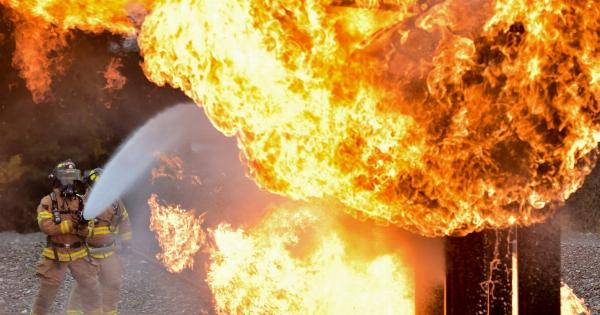Exercise is important for maintaining overall health and well-being. It can help improve cardiovascular fitness, strengthen muscles, and promote weight loss.
However, exercising in extreme heat can pose certain risks and precautions need to be taken to ensure safety.
Risks of exercising in heat
Exercising in high temperatures can lead to a range of heat-related illnesses. These include:.
1. Heat cramps
Heat cramps are painful muscle contractions that occur during or after exercise in hot environments. They are caused due to excessive sweating which depletes the body’s electrolytes, such as sodium and potassium.
Common areas affected by heat cramps are the abdomen, arms, and calves.
2. Heat exhaustion
Heat exhaustion is a condition where the body is unable to cool itself down properly. It typically occurs due to excessive sweating and dehydration.
Symptoms of heat exhaustion include heavy sweating, weakness, dizziness, headache, nausea, and a rapid pulse. If left untreated, it can progress to heat stroke.
3. Heat stroke
Heat stroke is the most severe form of heat-related illness and is considered a medical emergency. It occurs when the body’s core temperature rises above 104 degrees Fahrenheit (40 degrees Celsius).
Symptoms include high body temperature, confusion, loss of consciousness, seizures, and organ failure. Heat stroke can be fatal if not treated immediately.
Precautions for exercising in heat
To minimize the risks associated with exercising in hot conditions, the following precautions should be taken:.
1. Stay hydrated
Hydration is crucial when exercising in hot weather. Drink plenty of fluids before, during, and after your workout to replenish the water lost through sweat.
Opt for water or sports drinks that contain electrolytes to help maintain the body’s fluid balance.
2. Choose the right time
Avoid exercising during the hottest parts of the day, usually between 10 a.m. and 4 p.m. Instead, opt for early morning or late evening workouts when temperatures are cooler.
Check the weather forecast to ensure you’re aware of any extreme heat warnings.
3. Dress appropriately
Wear lightweight, breathable clothing that allows for sweat evaporation. Choose light-colored clothing as it reflects heat instead of absorbing it. Consider wearing a hat and applying sunscreen to protect your skin from sunburn.
4. Gradually acclimate to the heat
If you’re not used to exercising in hot weather, gradually acclimate your body to the heat. Start with shorter workouts and gradually increase the duration and intensity. This allows your body to adapt and better tolerate the heat stress.
5. Take frequent breaks
Take regular breaks during your workout to rest and cool down. Find shade or a cool place to rest and drink fluids to prevent overheating. Listen to your body and don’t push yourself beyond your limits.
6. Be aware of warning signs
Know the warning signs of heat-related illnesses and pay attention to how you’re feeling during your workout.
If you experience symptoms like dizziness, nausea, headache, or muscle cramps, stop exercising immediately and seek shade or a cooler environment.
7. Modify your intensity
Lower the intensity of your workout when exercising in high heat. Opt for more low-impact exercises or consider indoor alternatives, such as a treadmill or stationary bike, if the heat is too intense.
8. Check with your doctor
If you have any pre-existing medical conditions or take medications, it’s important to consult with your doctor before exercising in extreme heat.
They can provide guidance specific to your situation and help determine if any additional precautions or modifications are necessary.
Conclusion
Exercising in hot weather can be challenging and carries certain risks. However, by taking the necessary precautions and listening to your body, you can safely enjoy outdoor workouts even in high temperatures.
Remember to stay hydrated, dress appropriately, and be aware of any warning signs of heat-related illnesses. Always prioritize your safety and well-being when exercising in hot conditions.





























